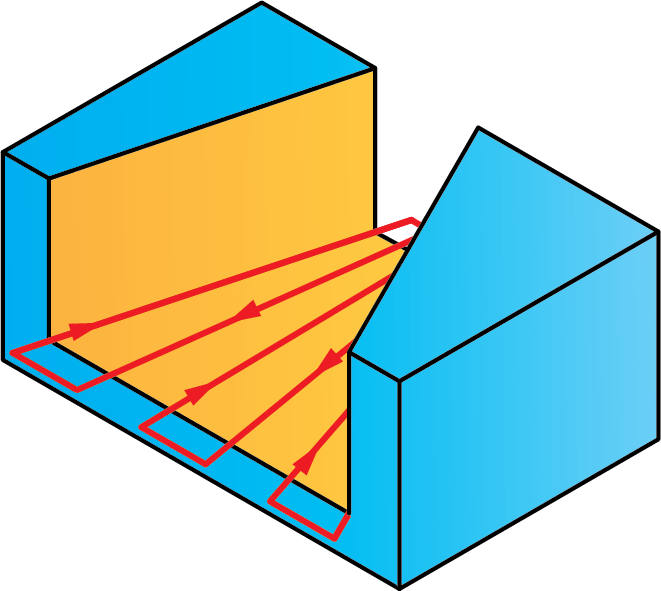Ruled surface
This ToolBox Cycles strategy enables you to perform the machining of an analytical ruled surface defined by two open contours. The cutting passes are evenly distributed between the defined contours.
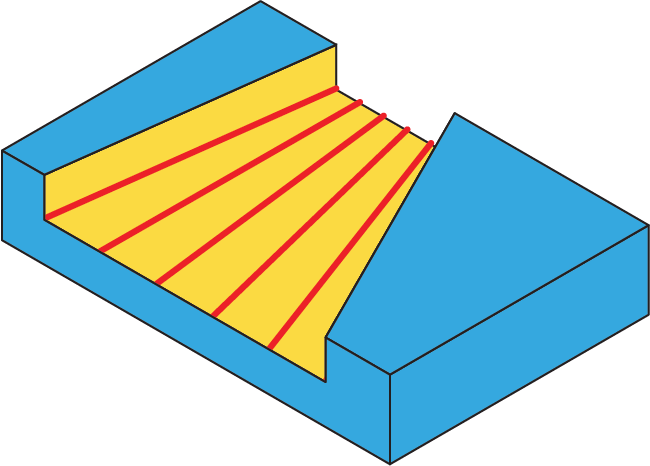
Geometry definition
The strategy provided by this sub-operation can be performed only on a pair of chains regardless to their open/close status; accordingly, the geometry should contain at least two chains. The geometry containing only one chain is considered as unsuitable. The geometry containing more than one chain is considered as suitable. The pairs of chains are determined according to the chains order. The first and the second chain will form the first pair, the third and the forth chains will form the second pair, and so on. When the geometry contains an odd number of open chains, the last chain (not included into a pair of chains) will be ignored.
Generally, this sub-operation is intended to perform the machining of the open shaped slot areas by generating a number of morphing cutting passes from the first chain to the second chain.
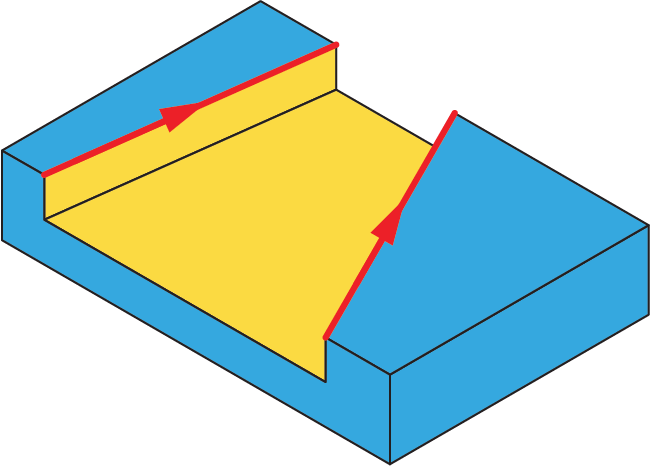
Also it can be used for the morphed machining between two closed contours where one contour is surrounding the other. Therefore it is recommended to choose for the geometry chains pair either both open chains or both closed chains. A pair formed from a closed chain and an open chain can cause errors during the calculation and wrong tool path. A pair formed from intersecting chains can also cause problems in the tool path.
The direction of the geometry chains is important. During the tool path calculation, SolidCAM performs morphing between the chains. During the morphing, the chain points are generated in the direction of the chain; these points are connected.
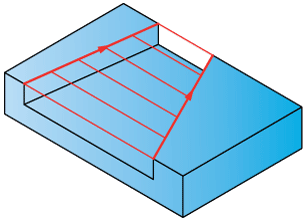
These connection lines are divided into the same number of segments.
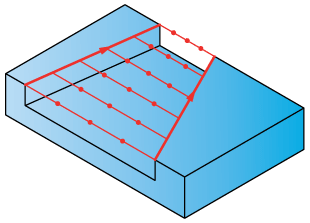
The cutting passes are generated passing through these dividing points.
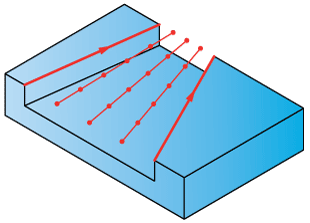
Therefore wrong correlation between the direction of the geometry chains can cause the wrong tool path. The image below illustrates the correct tool path resulting from correct correlation between the chains direction.
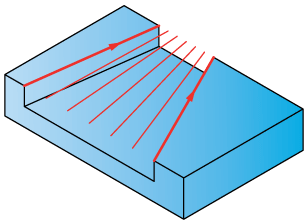
The image below illustrates the wrong tool path caused by the wrong correlation between chains direction.
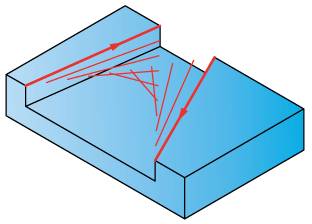
Technological parameters
Rough
SolidCAM enables you to perform the ruled surface machining in a number of cutting passes distributed along the tool axis.
Step down
The distance between two successive cutting levels is defined by the Step down parameter. The Equal step down option enables you to define a number of evenly distributed cutting levels. SolidCAM automatically calculates the actual step down to keep an equal distance between all passes, while taking into account the specified Max. Step down value so that it is not exceeded.
Step over
This parameter defines the distance between two successive cutting passes.
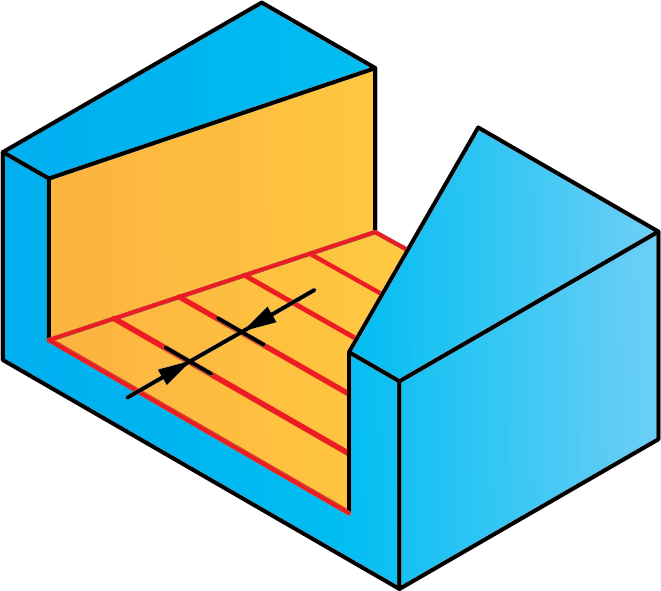
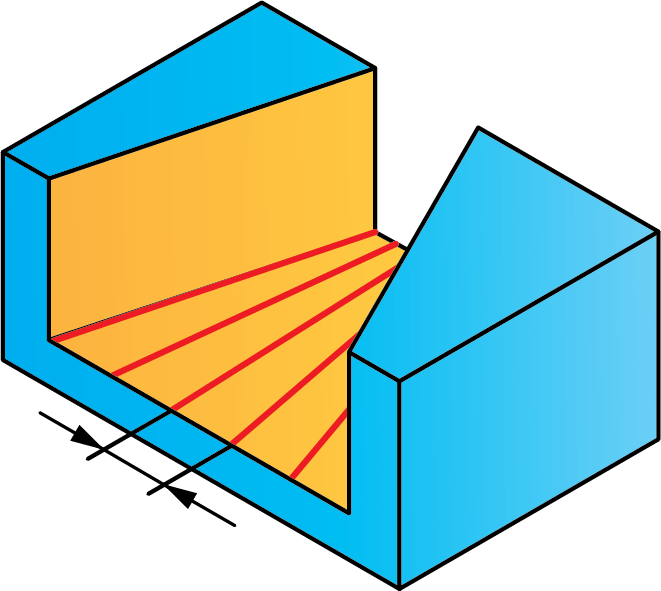
Cutting direction
This section enables you to define the tool path direction relative to the geometry.
When the Along option is chosen, the tool path is generated along the geometry chains.
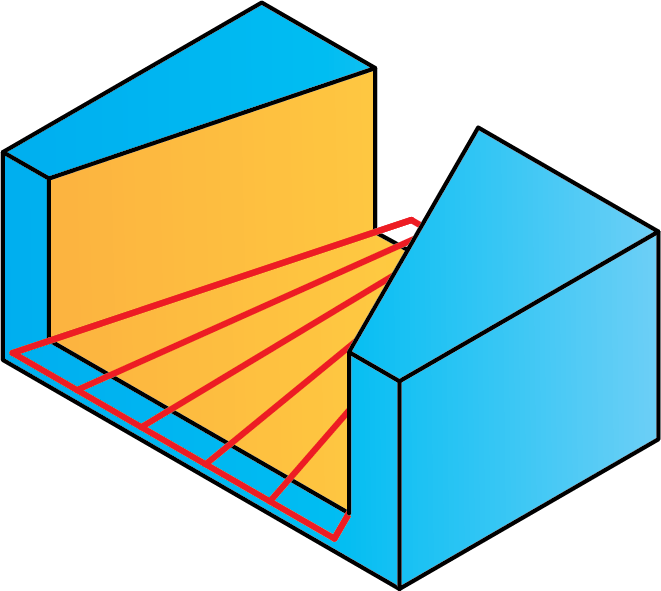
When the Across option is chosen, the tool path is generated across the geometry chains.
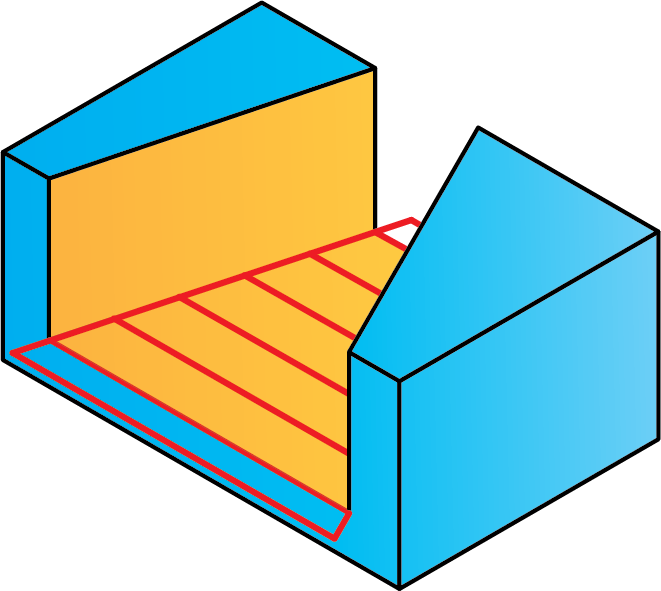
Tool path linking
This section enables you to define the direction of the tool path.
When the One way option is chosen, the cutting passes are generated according to the direction of the geometry chains.
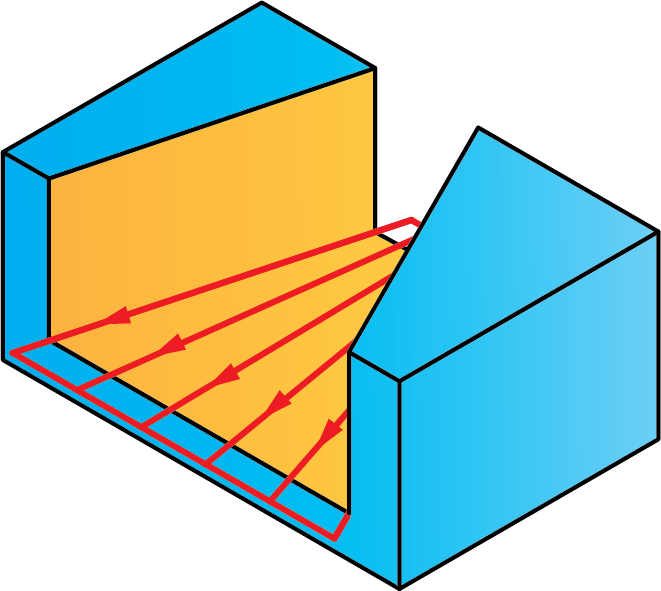
When the Zigzag option is chosen, the tool path is generated in the zigzag manner. The direction of the first cutting pass is defined according to the direction of the first chain, the direction of the next cutting pass is defined reversed in order to perform the zigzag connection between the end of the first cutting pass and the beginning of the second cutting pass.
Sort by
This option enables you to choose the method of sorting the cutting passes.
When the Passes option is chosen, the tool completes the machining of a specific Z-level for a specific chain and then moves to the next Z-level of the same chain. When machining of all the Z-levels of a specific chain is completed, the tool moves to the next chain.
When the Slices option is chosen, machining of all chains at a specific Z-level is performed; when machining of this level is completed, the tool moves down to the next level, and so forth.
Offsets
This section enables you to define Wall and Floor offsets for this sub-operation. The Wall offset is applied to the walls adjacent to the ruled surface floor; the specified offset is left unmachined during the current sub-operation. The Floor offset is applied to the floor of surface ruled face; the specified offset is left unmachined during the current sub-operation. When the Floor offset value is specified, SolidCAM performs the machining by the Z-levels defined with the Step down parameter. The machining is performed until the Floor offset level.
Extension
During the machining, the tool path is extended over the slot entrance in order to perform the approach to the cutting area from the outside and exit from the material at the end of the slot. The Extension section enables you to define the tool path extension either by percentage of the tool diameter (the % of tool diameter option) or by value (the Value option.
Finish
The Wall finish option enables you to perform a final finishing pass cleaning the walls. You can specify the Step down value in a separate field.
Tool path calculation
During the tool path calculation, SolidCAM determines a number of Z-levels where the tool path passes are located. The levels are distributed from the Upper level of the sub-operation until the Depth level (modified with the Floor offset). The distance between two successive Z-levels is defined with the Step down parameter.
At the next stage, SolidCAM generates the cutting passes at the first cutting level using the morphing technology, the cutting passes are generated either along the geometry or across it, which depends on the Cutting direction option used.

At the last stage the tool path is linked according to the chains direction and the Tool path linking option.
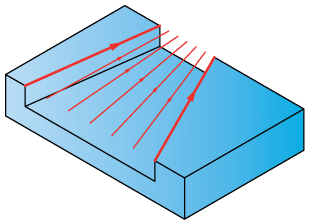
The tool path generated for the first cutting level is copied into the rest of cutting levels.
